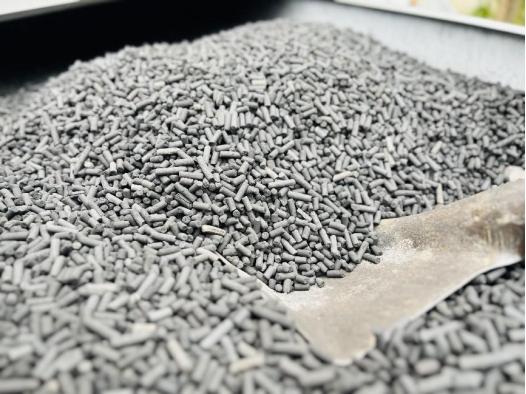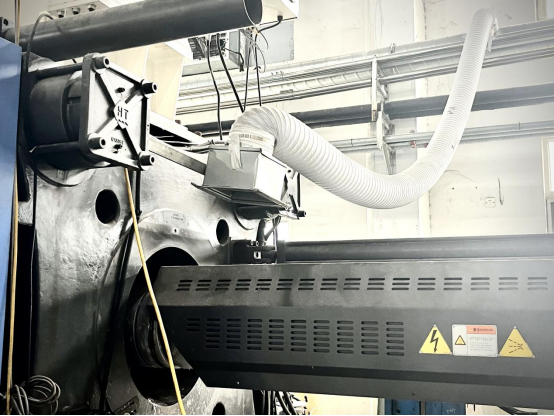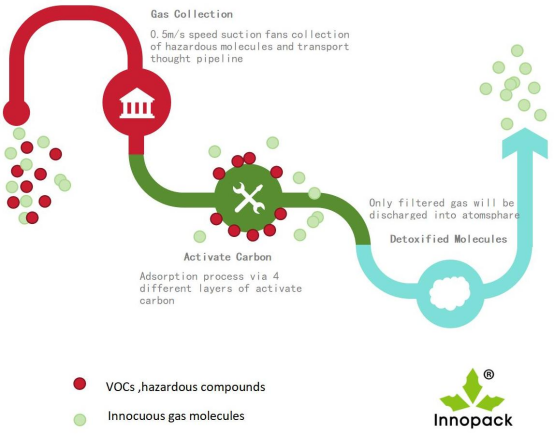Growing global concerns over climate change which is caused by gas emissions are putting an increasing focus on sustainability. Plastic applications can replace tree-derived products, like containers, furniture, and papers, which are major deforestation drivers. The Innopack® plastic buckets packaging & supply can support the sustainable development in the plastic economy and contribute to a greener planet.
The production of plastic injection molding process uses petrochemicals as a raw material and generates greenhouse gas emissions. It rarely can relate to serious pollution, and all products can be recycled. Perhaps the biggest cost is the waste generated by discarded plastic goods, one is the plastic waste such as defective buckets and nozzle plastic materials, that can be utilized through innopack® recycle plastic and re-production loop.
The other one is the potential gas emission during injection molding production. Let’s take a look today, through the adsorption force of activated carbon, the off gas in the production of the factory is purified to protect the atmosphere.
What Activated Carbon Can Do?
Activated carbon filtration is a cleanse methodology using an adsorption media filter that uses granular activated carbon (GAC) or activated carbon. This filter is designed to remove specific pollutants and hazardous compounds, including organic chemicals in the water, as well as gas particles and volatile organic compounds in the air.
Activated Carbon forces Airborne gaseous chemicals (specifically volatile organic chemicals, or VOCs) to stick to the surface until the activated carbon surface is fully saturated. The process of removing pollutants from the air is so-called “adsorption”
(Photo: suction fans at speed of 0.5 m/s work hard on gas collection where site up on the gate of injection molding machine)
How does Activated Carbon work?
During injection molding production, the thermal controller turns the heat bar up to 250℃ to melt plastic PP or HDPE resin pellets into the liquid phase. Meantime, hazardous compounds (VOCs)might be emitted during the melting process. In air, the reaction proceeds more rapidly oxidative products such as aldehydes and ketones are formed.
By Air Fan (0.5m/s)Suction pipeline and link to an industrial air purifier, the carbon helps to filter hazardous compounds when the off-gas collects together and then is discharged into the atmosphere. Activated carbon is an internal networking pore, once the gas molecules come into tonnes of holes, the surface will trap and stick all hazardous compounds, letting neutral molecules pass smoothly.
It is a miracle designed for a carbonaceous structure which is 1 gram of activated carbon can have hundreds of square meters of internal surface area. Thus, active carbon provides strong adsorption which is the best cleanse of eco-friendly plastic manufacturing.
(Image: how active carbon works on removal of hazardous compounds in Innopacks® injection molding manufacturing)
Why is the Activated Carbon?
Activated carbon is made from carbon that has been processed to have a greater adsorption power. In recent times, air pollution has emerged as a significant public health concern.
Although there are different methods of reducing gas emissions, for example using solar energy power, decreasing gas-engine working, and using chemical contents for neutralization; however, according to cost-effectiveness, activated carbon is the most common filtration. Causing premature death rates and increasing the risk of respiratory or cardiovascular diseases, air pollution is a public health issue.
Health Effects Links to Air Pollution
In countries with fast-developing economies, the air pollution trends impending negative efforts. Gas emission concerns over the health dangers of air pollution. Studies evaluating airborne particulates in the air have identified that certain contaminants cause health issues such as allergies, asthma, respiratory infections, and other adverse health effects from dangerous gases.
VOCs turn to harmful health issues:
- Eye, nose, and throat irritation
- Headaches
- Loss of coordination
- Nausea
- Damage to the liver and kidney
- Central nervous system damage
(Photo: gas emission causes air pollution relates to increasing respiratory disease)
One needs to know, that the right solution for a machine’s off-gas adsorption via activated carbon can prevent gas emissions and hazardous components to human health and the environment.
Research on Cancer (IARC) and the Occupational Safety and Health Administration (OSHA), have not classified polypropylene (PP) as carcinogenic based on its Safety Data Sheet. This Neutral and safe material of PP has greater heat resistance, making it a common choice for food packaging, storage bags, and containers.
Innopack® environmental protection
In Innopack® plastic buckets manufacturing, all injection molding machines run with industrial gas suction fans on. Because most melting plastic gas discharges at this area, these fans are located upon the connection area of the gate and nozzle for protecting the work environment safe and comfortable.
We also provide 4-level processes of adsorption processes in an activated carbon filtration machine. Gas molecules will go through 4 absorption boxes total containing 375 kg of active-carbon granular sticks. Innopack® strictly controls all gas emissions must comply with non-toxic discharge and meet local EPA requirements.
To achieve emission reduction and zero pollution, every 3 months we load new activated carbon to replace all used activated carbon. It can prevent the filtration machine from running while carbon is saturated. if you are intersecting in our plastic recycling please read our previous article to understand how we make new buckets from 100% recycled flanks.

Innopack® plastic eco-friendly manufacturer has over 30+ injection molding machines. injection molding machines produce more than 5 thousand recyclable plastic containers and accessories in different colors and sizes. All plastic buckets and accessories they made, are used in different applicable sectors such as food-graded packaging, painting containers, construction utilization, and farming.
Innopack® is planning to upgrade machines to pure electric drivers from traditional hydraulic divers and build a photovoltaic power station for energy efficiency. By 2025, innopack® will save 50% of energy consumption to reduce carbon footprint.




